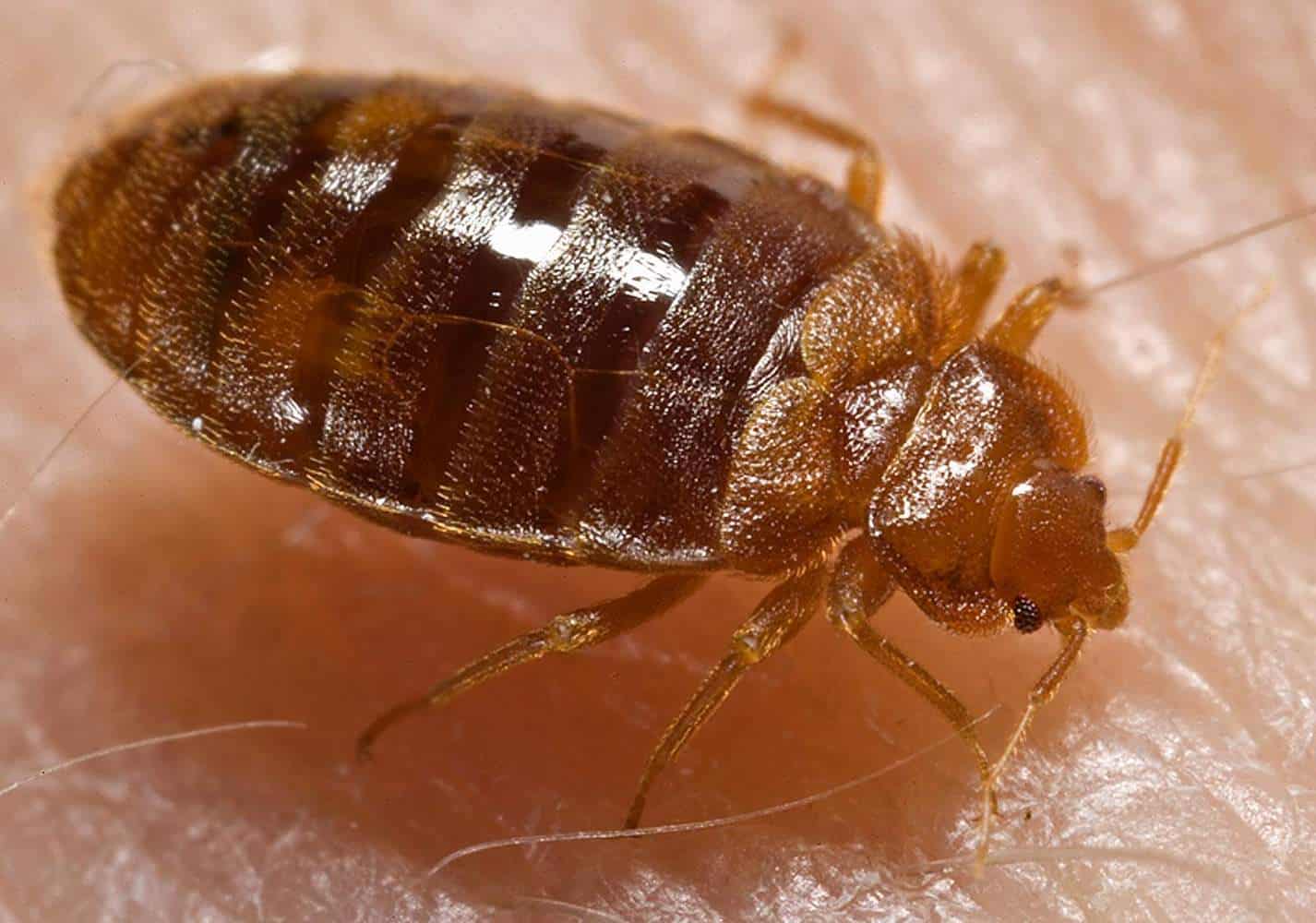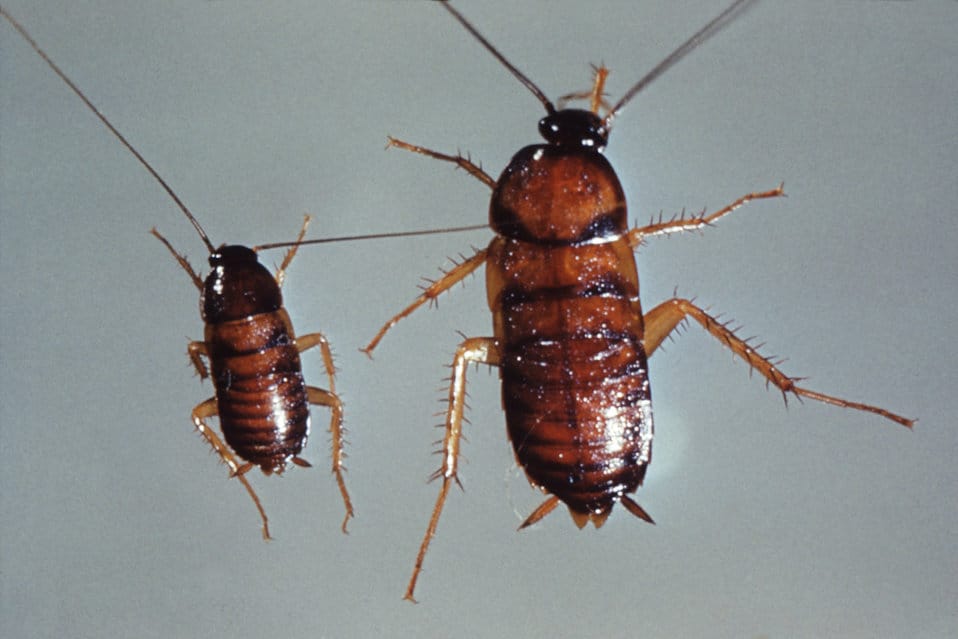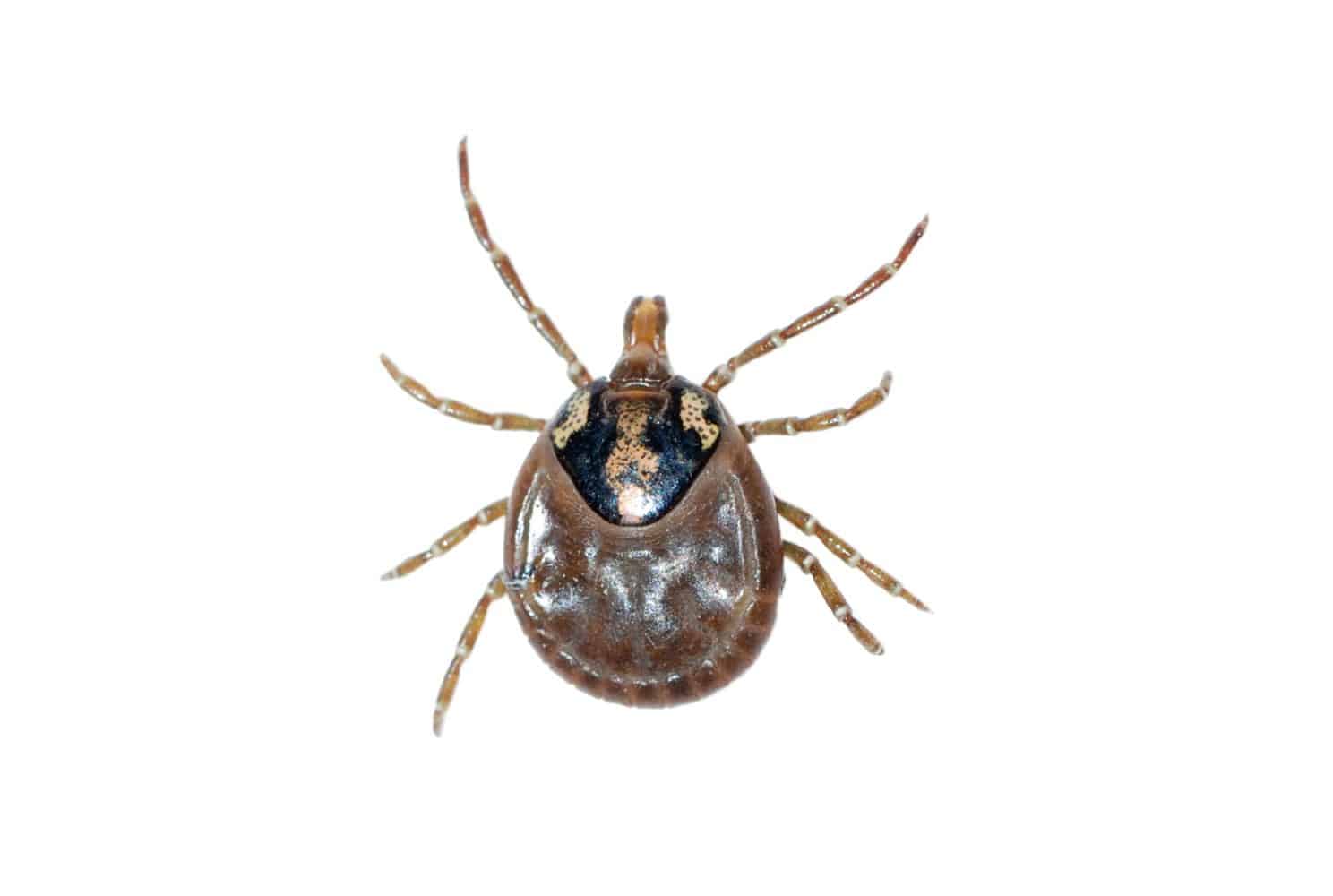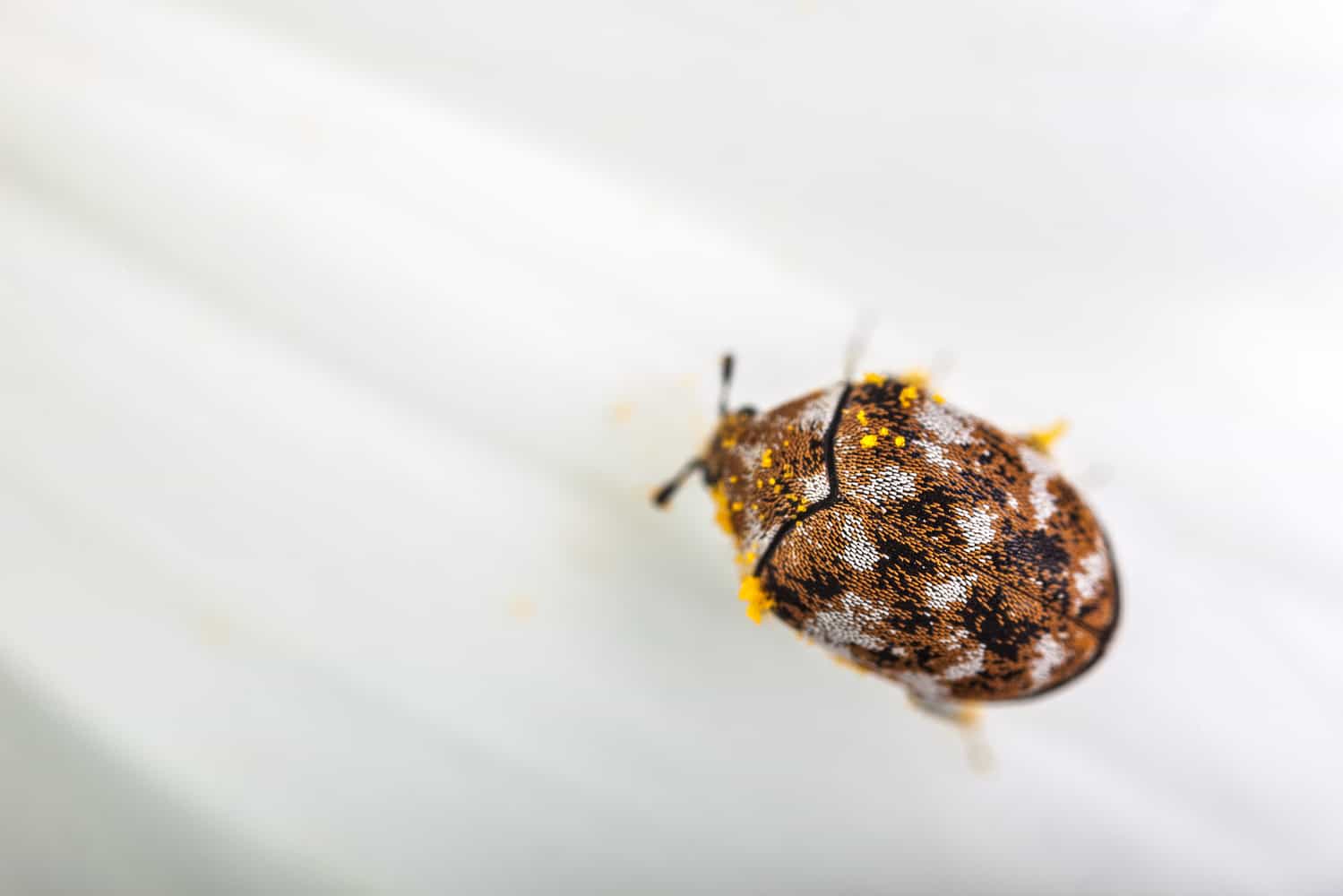When you have bed bug infestation at your home it is better to find it out as early as possible. Taking care before it escalates is far less costly and time-consuming.
Many people mistake bed bugs with cockroaches. Indeed both parasites at some point in their lifecycle look similar. In this guide, I show what are the key differences between bed bug and cockroaches.
Besides, there are many other insects that resemble bed bugs. Make sure you identify pests correctly before proceeding to treat the infestation. In any case, the best way to deal with any parasites is to call a pest control professional.
What is a bed bug?
Bed bugs identified by reddish-brown color and flattened oval shape. They are usually the size of poppy seeds independently of their age.
Baby bed bugs are similar in size to adults and are lighter in color. On the head, they have short thick antennas. Bed bugs do have wing-like structures on their back but they do not fly.

What is a cockroach?
Mature cockroaches can be easily identified. They have quite large bodies of 1 – 2 inches long and you can spot them from a distance.
Their body color varies from light tan to dark brown (sometimes even black) and their shape is flat oval. Roaches have two quite long forward-pointing antennas. They do have wings on their back and can fly.
Differences between bed bugs and roaches
Both bugs have similarities between them, especially at a certain age. Yet, there are some differences that can help you identify which type of bug you are dealing with.
Bites
Bed bugs and cockroaches can both bite. However, bed bugs are much more aggressive and bite humans more often than cockroaches. Their bite leaves an itchy red mark on the skin.
Bed bugs are blood-sucking pests and depend on it to survive. When a bug comes in close contact with a human it attaches itself to the host and sucks blood until they are full.
Cockroaches can bite, but they very rarely will bait humans. They are not blood-sucking insects and feed on trash, food leftovers, even feces.
If roaches will find more accessible food sources they usually will not bite humans. In case they will not find any other food source they might try to bite humans.

Fighter or runner?
Both bugs will try to avoid awake humans and usually will run away during the day. Bed bugs and cockroaches will hide in cracks, under things, and try to avoid contact with humans.
If you try to squash either of those bugs they will not fight and will try to hide. Bed bugs do not even have any capability to fight. They do not have jaws or sting just a feeding apparatus. It cannot be used to fight and attack humans.
Cockroaches do have jaws and could try to nip you with them. It will not make much damage off course due to the size. In case of one to one standoff against a human, they will always try to run away and hide in a crack instead of fighting.
Can they fly?
Cockroaches and bed bugs have wings on their back. Each of those pests uses them differently. Bed bugs do not fly and travel from A to B by crawling. They live under a mattress and don’t need to fly to reach their target which is sleeping in the same bed. Bed bugs do not need to fly also because they do not leave creature comforts of home and do not go outside.
Cockroaches, on the other hand, can fly and they sometimes glide through the air if they need to. Not many people know that roaches can fly.
Their hard body shell hides wings underneath. When a cockroach needs to fly it opens those hard shell parts and spreads the wings to glide away from you.
Roaches will rarely fly and most of the time you’ll see them crawling around from one hiding space to another.
Day or night
Both bugs are nocturnal and most likely you will not see them during the day time. Bed bugs will feed during the night when people are sleeping in their beds. During the day they are digesting the blood sucked during the night, laying eggs or staying still in their hiding places. If someone will disturb them during the day they will just run away and try to hide again.
Cockroaches are nocturnal insects as well. During the night when people are sleeping, roaches will try to find food sources without anyone disturbing.
Cockroaches are more likely to appear in your home during the day in comparison to bed bugs. They are nimble and quite fast bugs thus are more confident that they will avoid trouble and get killed. Roaches will show up during the day only if it is necessary and should stay in their hiding places.
Do they spread diseases?
Even though bed bugs live on human blood there is no evidence that they spread diseases. Itching which appears after bed bug bite might lead to intense scratching. It then can increase the chance of skin infection. Bed bugs are usually surviving on a single person or a couple who sleeps in the same bed. They do not tend to spread the disease or the couple already might have it.
Cockroaches have much more potential to carry diseases by the nature they live and feed. Roaches are living close to the damp, dark places near the food sources. Which could be a trash bin or even sewer. Due to the fact that they visit such places, roaches can spread diseases such as diarrhea, dysentery, typhoid fever, and even cholera. Roach infestation can cause asthma and allergies depending on what kind of germs pick up during their daily “dirty” routes.
Do roaches eat bed bugs?
Roaches are scavengers and omnivores. They are not very picky about food. They can eat anything. Including food waste, small insects, like ants, spiders, or even other cockroaches.
Bed bugs do not fall within the usual diet for cockroaches. But if the roach is out to search for food and comes across a bed bug especially a dead one it might eat it. You should not rely on cockroaches to get rid of bed bugs in your home.
Bugs that look like cockroaches or bed bugs
You may have difficulty in recognizing what kind of bug you have found at your home. There are several species of insects that look like roaches or bed bugs at a certain point in their life.
Baby cockroaches
Adult cockroaches will not look like bed bugs. At some age, cockroaches are very similar to bed bugs and can be mistaken for one another.
When you have baby cockroaches they will hide in cracks and crevices closer to the food and water sources. They will be around damp, dark spaces near sewers and trash cans. Bed bugs as the name suggests are usually living in the mattresses – closer to humans.
Cockroach nymphs appear white right after hatching or molting. They will turn reddish-brown and will look similar to bed bugs at that age. Baby roaches appear more cylindrical in shape and bed bugs will be shorter and oval that looks like an apple seed.
The best way to differentiate bed bugs vs cockroaches is by the shape of their eyes and length of antennas. If the antennas are as long as the body of insect it is most likely a cockroach. If you see a small bug with eyes sticking out and short antennas then you most likely have a bed bug infestation.

Bat bugs
Bed bugs and bat bugs have similar sounding names. That is not the only similarity they have in common. Both bugs also have very similar in appearance. It is claimed that the difference between the two bugs only can be spotted by a trained professional.
The main difference between bed bugs and bat bugs is their hair. Bat bugs have longer hairs on their upper thorax in comparison to bed bugs. Since both bugs are very small it is pretty much impossible to see the difference without a microscope.
Bat bugs and bed bugs are both blood-sucking insects. They both feed on warm-blooded mammals, but their preference for hosts is different. Bed bugs prefer human blood while bat bugs as their name suggests feeds on bat blood. When bat bugs appear near humans and there are no bats to host they would suck human blood also.
Booklice
Adult booklice do not resemble bed bugs in any way. However, they look like bed bug nymphs. Booklice is translucent white, grey, or brown in color. When comparing bed bug vs booklice you will notice that booklice have very long antennae pointing to the sides. In comparison bed bugs have quite short antennas. Also, bed bug nymphs do not look like they have a neck and booklice bugs do have it.
Booklice likes to hang around in high humidity areas, such as (you guessed it) damp books, near windows, window sills, and under wallpaper. They do not feed on blood as bed bugs do. Booklice feed on mold or mildew.
Wood ticks
Wood ticks also known as dog ticks are flat and oval-shaped insects. They also can be mistaken for bed bugs or cockroaches nymph. Wood tick appearance might be similar, but they usually live outside while bed bugs and roaches live inside people’s homes.
When ticks are feeding they are attaching themselves to the skin of the host in a single place. Tick sucks blood from the host until they are full and then fall out. Bed bug bites and feeds from the host in multiple places until retreating to their hiding spot.

Carpet beetles
Another insect that often confused for a bed bug is carpet beetle. This pest is similarly small, flat, and oval-shaped like a bed bug or baby roach. The main difference between these bugs is in color. Carpet beetles have brown shell with yellow and white spots on their back.
Carpet beetles are quite common inside the houses. They do not feed on blood. As the name suggests they like to eat natural fibers such as carpeting.
It is quite difficult to spot carpet beetle infestation. They feed in dark and hidden places underneath the furniture.

Fleas
Fleas are widely known as blood-sucking parasites, next to bed bugs. They both feed on the host blood and will bite humans or animals to get the fix. Bed bugs prefer humans as hosts because they usually live in the mattresses. Fleas like to find food sources from furry animals but can jump on humans if they need to.
Either bed bug and fleas are a reddish-brown color and do not have wings.
Spider beetles
Bed bugs and spider beetles look similar in color. The key difference is that spider beetles are not blood-sucking parasites. They like to feast on plant-based food found inside the house.
Spider beetles are nocturnal animals that like to search for food at night. During the day they are hiding in dark spaces away from humans. They usually can be found in cracks and crevices much like cockroaches. Both pests are nocturnal and they are active during the night. It makes them harder to spot.
Final words
It might be difficult to find out exactly which of the pest infestations you have at home. That is why it is always recommended to call a professional pest control specialist.
Bed bugs and baby cockroaches can be very similar and difficult to distinguish with the naked eye. Especially when there are so many other parasite insects that looks similar to the bed bugs and cockroaches at various stages in their lifecycle.
When you have a suspicion that you have bed bugs or cockroach nymphs at home you may also want to make sure you are not mistaken. There are bat bugs, booklice, wood ticks, carpet beetles, spider beetles, or even fleas that look like bed bugs or baby roaches.
You need to check for key signs of bed bug infestation in your home. Such as bite marks on your skin, rusty/reddish blood stains on sheets or mattresses, dark spots which are bed bug excrement, and of course live bed bugs.
